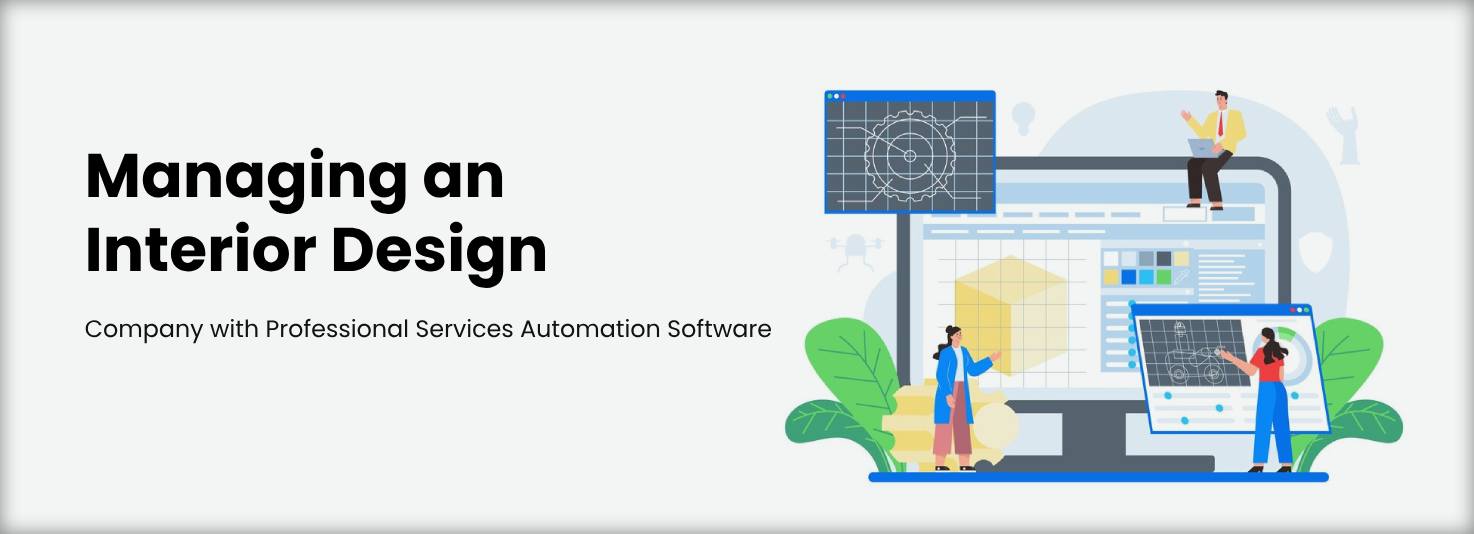Managing an Interior Design Company with Professional Services Automation Software
In the fast-paced world of interior design, firms face the dual challenge of delivering creative solutions while maintaining efficient operations. Professional Services Automation (PSA) software offers a powerful solution to streamline processes, enhance collaboration, and optimize project management, allowing interior designers to focus on what they do best: creating beautiful spaces.

Professional Services Automation software is a suite of integrated tools designed to improve the efficiency and effectiveness of service-oriented businesses, including interior design firms. By automating and centralizing functions such as project management, resource allocation, time tracking, and financial management, PSA software enables design teams to enhance productivity and deliver exceptional client experiences.
-
Project Management:
PSA software provides robust project management tools, enabling designers to create detailed project timelines, set milestones, and assign tasks. This ensures that projects stay on track and deadlines are met, regardless of their complexity. -
Resource Management:
Effective resource allocation is crucial in interior design. PSA tools help firms track the availability and skill sets of their team members, allowing managers to assign the right resources to specific projects based on their expertise. -
Time Tracking:
Accurate time tracking is vital for billing and performance analysis. PSA software enables team members to log hours spent on various tasks, ensuring that all billable time is captured and clients are billed accurately. -
Budgeting and Financial Management:
Interior design projects often involve detailed budgets. PSA software allows firms to create budgets, track expenses, and manage invoicing, helping to maintain financial control and profitability throughout the project lifecycle. -
Client Management:
With built-in CRM capabilities, PSA software enables designers to manage client relationships effectively. This includes tracking communication, managing project approvals, and ensuring that client feedback is integrated into the design process. -
Reporting and Analytics:
Access to real-time data and analytics allows firms to assess project performance, resource utilization, and financial metrics. These insights inform strategic decisions and drive continuous improvement.
-
Increased Efficiency
By automating administrative tasks like time tracking and invoicing, interior designers can focus more on the creative aspects of their work. This leads to improved productivity and faster project turnaround times. -
Enhanced Collaboration
PSA software facilitates better communication among team members and clients. With shared project updates, document management, and feedback loops, everyone involved can stay aligned, reducing misunderstandings and fostering teamwork. -
Data-Driven Decision Making
Real-time reporting and analytics provide valuable insights into project health and financial performance. This data-driven approach allows firms to make informed decisions, adapt to challenges, and identify opportunities for growth. -
Stronger Client Relationships
With improved project tracking and communication tools, designers can keep clients informed and engaged throughout the design process. This transparency builds trust and helps ensure client satisfaction. -
Improved Profitability
By optimizing resource utilization and ensuring accurate billing, PSA software can enhance a firm's profitability. It helps identify the most lucrative projects and highlights areas where efficiencies can be gained.
-
Industry-Specific Features:
Look for software that includes features tailored to the interior design industry, such as design review workflows, material and furniture specifications, and client approval processes. -
Integration Capabilities:
Ensure the PSA tool can integrate seamlessly with other design software, accounting systems, and project management tools already in use. -
User Experience:
A user-friendly interface is essential for team adoption. Evaluate different options through demos or trial versions to find the best fit for your team. -
Support and Training:
Consider the level of customer support and training offered by the vendor to ensure your team can maximize the software’s potential.
In the competitive field of interior design, Professional Services Automation software provides the tools necessary to streamline operations and enhance client satisfaction. By leveraging the features of PSA software, interior design firms can improve project management, optimize resource allocation, and ultimately drive profitability. Investing in PSA software is not just a practical decision; it’s a strategic move that can position your firm for success in a dynamic industry.